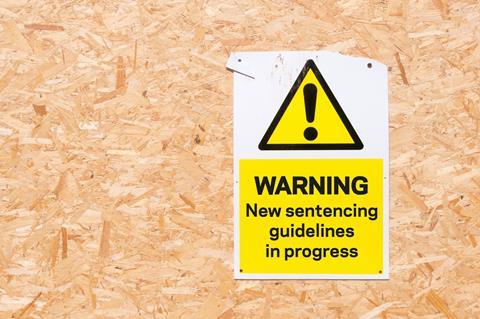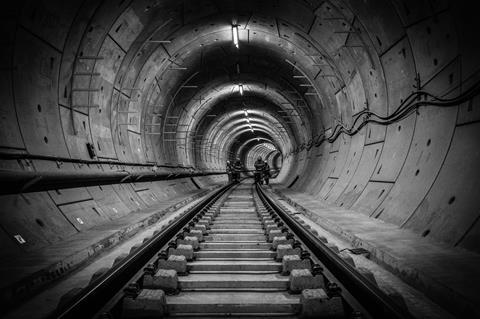The Definitive Guideline to health and safety sentencing was brought into force last year, signalling larger and more discretionary fines. Mark Leftly looks at its impact so far on SMEs in particular and what it signals for safety in the sector

Rarely does a set of legal changes so live up to its dramatic billing.
New sentencing guidelines, introduced in February last year, were widely trailed as the most fundamental change to health and safety enforcement for more than four decades, since the Health and Safety at Work Act took effect in 1974.
The Sentencing CouncilŌĆÖs ŌĆ£Definitive GuidelineŌĆØ created a nine-step, codified approach to all health and safety and corporate manslaughter offences committed by companies and individuals.
Sentencing was tied to revenue, with large companies turning over ┬Ż50m or more generally falling into a range of fines from ┬Ż6,000 to ┬Ż3m, depending on culpability and harm caused. In certain circumstances, the countryŌĆÖs biggest firms could face penalties of ┬Ż10m for the most serious breaches or even ┬Ż20m for corporate manslaughter.
Law firm Kennedys has pointed out that large firms would previously have expected a fine of ┬Ż250,000 to ┬Ż350,000 if guilty of failures that caused death, but this would now typically be expected to be about four times higher at ┬Ż1.2m.
Moreover, the guideline advises the courts to give more weight to the harm risked rather than that caused, which adds further uncertainty about the magnitude of the possible fine imposed, given this could in part be down to the judgeŌĆÖs interpretation of what happened.
The construction sector had particular reason to pay attention: despite accounting for about only 6% of the UK workforce, the nature of the industry means it is responsible for around one-third of work-related deaths.
So, now that the guideline has been in place for 18 months, how much of an impact is it having on the sector ŌĆō and is it proving the deterrent it was designed to be?
Year One
By July last year, insurance and dispute resolution lawyer BLM found that of the first 101 health and safety fines issued since the guidelines came into force, nearly 40% concerned the construction industry. These amounted to nearly ┬Ż8m, while the costs of prosecuting those construction companies came to more than ┬Ż350,000.
This summer, another law firm, Clyde & Co, has arguably produced the most significant analysis of the guidelineŌĆÖs impact yet, given it is based on a full yearŌĆÖs worth of data and implications.
It found that across British industries, fines of more than ┬Ż1m ŌĆō which used to be viewed as the benchmark for a company causing a public disaster ŌĆō had become commonplace: 19 penalties were at least this amount, more than the previous 20 years combined.
Nearly ┬Ż77m of fines were collected in that first year, up 111% on the previous 12 months, although construction was by no means the only industry that felt the impact. Manufacturing was the most heavily fined sector at ┬Ż22.7m and attractions giant Merlin was slapped with the biggest penalty, ┬Ż5m, for a rollercoaster crash at Alton Towers, in which 16 people were injured, including two teenage girls who needed leg amputations.
The amount people are hit by is insignificant to the suffering of the victims. The amounts are minimal ŌĆō ┬Ż1m fine on, say, a ┬Ż2bn project is absolutely insignificant
Bernard McAulay, Unite
However, construction was fined nearly ┬Ż13m from 1 February 2016 to 31 January this year, with an average just shy of ┬Ż93,000. This was against ┬Ż7.1m the previous 12 months, an 82.8% increase. The highest fine was against Balfour Beatty for a trench collapse on a wind farm project in Lancashire seven years ago.
Monavon Construction received the biggest fine by percentage of turnover ŌĆō 27.5% ŌĆō across all industries, after pleading guilty to corporate manslaughter when two men died from their injuries as a result of falling through a hoarding and down into a basement while walking past a building site in north London.
The fine ŌĆō amounting to ┬Ż550,000 ŌĆō illustrates a growing fear that SMEs are being particularly hard hit by the sentencing changes.
The guidelineŌĆÖs central thrust was for fines to be proportional to the size of the company, so large and small firms are impacted in similar ways.
Yet Clyde & Co found big contractors ŌĆ£are yet to be fined anything like 0.1% of their turnoverŌĆØ, while SMEs are typically being hit with 1.5% to 3.75% of revenue.
As such, the law change has been far more significant for SMEs, particularly as it comes at a time when more than a quarter of construction companies are exhibiting signs of potential insolvency, according to acccountancy firm Moore Stephens. This is because smaller construction firms are finding it particularly difficult to secure bank lending for projects, hitting their cash flow.

SMEs
However, the Health and Safety Executive (HSE) has been particularly concerned by SMEs for some time. For example, the HSE targeted small refurbishment sites during a month-long drive in 2015, resulting in 692 enforcement notices and 983 notifications of health and/or safety breaches. This exposed problems associated with working at height and exposure to silicon dust and asbestos. The HSE chief inspector of construction said at the time workers were found to have been ŌĆ£put at risk to save minutes on the jobŌĆØ.
Rhian Greaves, head of compliance and strategic support at Clyde & Co, says: ŌĆ£The most significant impact in the construction sector has been on SMEs. The HSE has spent a lot of time trying to get SMEs to commit to health and safety, given the period theyŌĆÖve come through [the financial crisis] and margins they make [can lead to cutting corners].
ŌĆ£Larger contractors will probably say ŌĆśfair enoughŌĆÖ on them receiving a higher proportion of fines, given they have health and safety systems in place. This is an education piece for SMEs.ŌĆØ
Greaves adds that the Court of Appeal has ŌĆ£generally been unsympatheticŌĆØ to those protesting the size of their fines, which is a ŌĆ£good indication of where the judiciary is at the moment ŌĆō theyŌĆÖve been waiting for thisŌĆØ.
In other words, the judiciary has believed for some time that more substantial fines were necessary and they are unlikely to let up soon. It is more likely, argues Greaves, that larger firms will see their fines increase to create an industry parity than that those of smaller contractors or subcontractors come down.
Large firms
For now, though, there are concerns the bigger firms are not receiving the type of punishments that will do them any material damage and therefore force them to improve their standards.
For example, unions are concerned by the ┬Ż1.1m fine and costs levied at Crossrail contractor consortium BFK last month after it pleaded guilty to three offences regarding the death of a worker in 2014 and two others who were injured the following year.
The Unite unionŌĆÖs national construction officer, Bernard McAulay, admits the courts must examine incidents like these on their circumstances before levying penalties, but adds: ŌĆ£When on a multi-billion contract, people will look at the amount people [are hit by] and think it is insignificant to the immediate suffering of the victims and their families. The amounts are minimal to what they could be ŌĆō ┬Ż1m fine on, say, a ┬Ż2bn project is absolutely insignificant.ŌĆØ
Accidents donŌĆÖt just happen, theyŌĆÖre caused ŌĆō a structure should not just collapse, nor should a crane
Phil Whitehurst, GMB
McAulay even claims that large contractors can so easily afford the penalties that some use them in projecting project costs. He says: ŌĆ£When they tender for jobs they incorporate the level of [anticipated] fine, so thereŌĆÖs no commitments to improving accountability.ŌĆØ
Phil Whitehurst, the GMB unionŌĆÖs national officer for engineering construction, adds: ŌĆ£Accidents donŌĆÖt just happen, theyŌĆÖre caused ŌĆō a structure should not just collapse, nor should a crane. Anybody who enters that site gate in the morning should leave as safely as they arrived, all in one piece. That means the actual fines have to reflect the seriousness of what is being caused.ŌĆØ
The HSE
There were all sorts of rumours prior to the guidelineŌĆÖs introduction that swirled around the industry. Peter Caplehorn, who chairs the Construction Industry CouncilŌĆÖs health and safety panel, recalls the ŌĆ£worryŌĆØ that the increased fines would essentially be ŌĆ£revenue coverŌĆØ for the HSE.
Although Caplehorn says theses concerns have ŌĆ£settled downŌĆØ since the guidelineŌĆÖs introduction, the HSE still finds itself firefighting this suggestion, with its press office frequently correcting articles that make such an implication. An HSE spokesman sighs: ŌĆ£The very premise is wrong, we donŌĆÖt take any money from the fines.ŌĆØ All fines actually go to the Treasury.
However, the unions are concerned about inspection numbers and think the size of the average fines on smaller firms might also hide the number of failures that are really taking place across the industry.
ŌĆ£The fines have gone up, but have the number of incidents gone up or decreased?ŌĆØ says McAulay.
His concerns are based on figures obtained by Unite in June following a Freedom of Information request. These showed that only 7,912 unannounced inspections on construction sites took place in 2016/17, a 14% drop on 2015/16 ŌĆō a year that had also seen a slight fall.
McAulay says: ŌĆ£The number of HSE inspections has seen a steady decline [over the austerity years], because people in government say ŌĆścut, cut, cutŌĆÖ, but it should be about improving standards. ItŌĆÖs maybe better getting more individuals [who breach health and safety rules] than having an increased level of fines.ŌĆØ
For its part, the HSE agreed to meet Unite. about concerns over the number of inspections, insisting construction is ŌĆ£a priorityŌĆØ and that its targeting of interventions and ability to deal with investigations has ŌĆ£improved significantlyŌĆØ in recent years.
However, there are some early signs the new penalty regime is working. For example, the HSE recorded 30 fatal injuries in the construction sector for 2016-17 ŌĆō this is down from 47 the previous year and is the lowest on record.
Either way, the guideline has clearly renewed pressure on the industry as a whole, with an emboldened judiciary seemingly determined to take advantage of its new sentencing strength.
That means the often eye-watering fines of the past 18 months seem likely to only increase in size, while unions will push for the sort of reforms that could end up in even more inspections and, therefore, further breaches unearthed on the nationŌĆÖs building sites.


























No comments yet